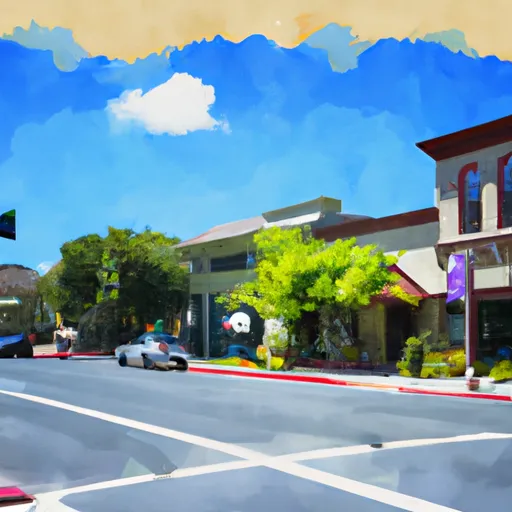-
 Snoflo Premium
Snoflo Premium
Get unlimited access to all our content
With no Ad interruptions! - Start Your Free Trial Login with existing account
Bryn-Mawr
Eden Index
Climate
8.9
•
Recreation
8.5
•
Community
3.4
•
Safeguard
7.4/10

Bryn-Mawr is a small unincorporated community in San Bernardino County, California, located in the foothills of the San Bernardino Mountains. The climate in Bryn-Mawr is typical of the Inland Empire region with hot summers and mild winters. The area is predominantly residential, with some light industry and commercial development. The hydrology of Bryn-Mawr is affected by the nearby Santa Ana River, which flows through the region. Outdoor enthusiasts can enjoy hiking and mountain biking in the nearby San Bernardino National Forest, or fishing and boating at nearby Lake Arrowhead. Additionally, the community is located near several recreational areas, including Glen Helen Regional Park and Fiesta Village Family Fun Park.
What is the Eden Index?
The Snoflo Eden Index serves as a comprehensive rating system for regions, evaluating their desirability through a holistic assessment of climate health, outdoor recreation opportunities, and natural disaster risk, acknowledging the profound impact of these factors on livability and well-being.
Climate Health Indicator (CHI): 8.9
Bryn-Mawr receives approximately
333mm of rain per year,
with humidity levels near 75%
and air temperatures averaging around
19°C.
Bryn-Mawr has a plant hardyness factor of
9, meaning
plants and agriculture in this region tend to thrive here all year round.
By considering the ideal temperature range, reliable water supplies, clean air, and stable seasonal rain or snowpacks, the Climate Health Indicator (CHI) underscores the significance of a healthy climate as the foundation for quality living.
A healthy climate is paramount for ensuring a high quality of life and livability in a region, fostering both physical well-being and environmental harmony. This can be characterized by ideal temperatures, reliable access to water supplies, clean air, and consistent seasonal rain or snowpacks.
Weather Forecast
Streamflow Conditions
Santa Ana
Area Rivers
Santa Ana
Snowpack Depths
Santa Ana
Reservoir Storage Capacity
Santa Ana
Groundwater Levels
Recreational Opportunity Index (ROI): 8.5
The Recreational Opportunity Index (ROI) recognizes the value of outdoor recreational options, such as parks, hiking trails, camping sites, and fishing spots, while acknowledging that climate plays a pivotal role in ensuring the comfort and consistency of these experiences.
Access to outdoor recreational opportunities, encompassing activities such as parks, hiking, camping, and fishing, is crucial for overall well-being, and the climate plays a pivotal role in enabling and enhancing these experiences, ensuring that individuals can engage in nature-based activities comfortably and consistently.
Camping Areas
| Campground | Campsites | Reservations | Toilets | Showers | Elevation |
|---|---|---|---|---|---|
| March ARB Military | None | 1,509 ft | |||
| Wildomar | 11 | 2,456 ft | |||
| Upper San Juan | 18 | 1,761 ft | |||
| El Cariso | 24 | 2,568 ft | |||
| Lake Perris State Rec Area | 351 | 1,600 ft | |||
| Rancho Jurupa Park | 67 | 751 ft | |||
| Lake Skinner | None | 1,514 ft | |||
| Yucaipa Regional Park | 51 | 2,658 ft | |||
| Lake Elsinore | 400 | 1,286 ft | |||
| Blue Jay | 50 | 3,358 ft |
Catastrophe Safeguard Index (CSI):
The Catastrophe Safeguard Index (CSI) recognizes that natural disaster risk, encompassing floods, fires, hurricanes, and tornadoes, can drastically affect safety and the overall appeal of an area.
The level of natural disaster risk in a region significantly affects safety and the overall livability, with climate change amplifying these risks by potentially increasing the frequency and intensity of events like floods, fires, hurricanes, and tornadoes, thereby posing substantial challenges to community resilience and well-being.
Community Resilience Indicator (CRI): 3.4
The Community Resilience Indicator (CRI) recognizes that education, healthcare, and socioeconomics are crucial to the well-being of a region. The CRI acknowledges the profound impact of these elements on residents' overall quality of life. By evaluating educational resources, healthcare accessibility, and economic inclusivity, the index captures the essential aspects that contribute to a thriving community, fostering resident satisfaction, equity, and social cohesion.

